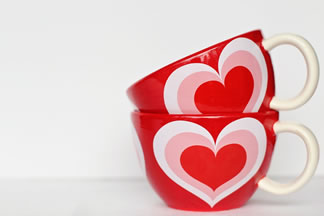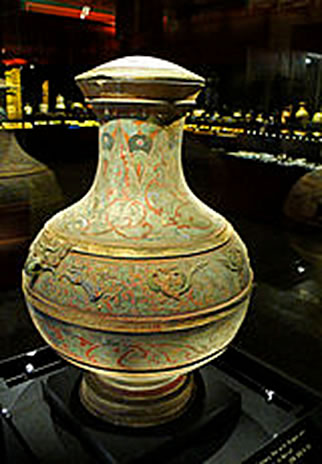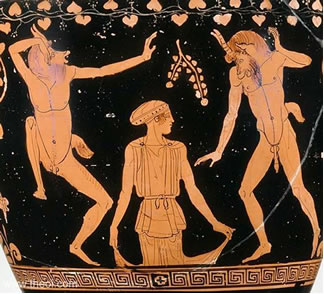Valentine's Day Mugs: Symbols and Traditions

Mugs are a hugely popular Valentine's Day gift. Giving a mug to a loved one can symbolise that you wish them comfort. Filling a mug with chocolates adds a touch of luxury. But how did the tradition of Valentine’s Day mugs start, and what does it actually mean?

Image from freegreatpicture.com
Pottery Symbolism in Ancient China
The Ancient Chinese were using symbols to decorate their pottery as early as 200 BC. Different symbols, animals, plants and flowers represented different emotions or blessings. The unity of male and female was usually depicted by the Yin-Yang or by the Dragon and the Phoenix, with the Dragon representing the male, or the Emperor, and the Phoenix the female, or Empress. Pairs of fish or cranes were also commonly used to symbolise marital happiness.
Chinese-inspired pottery became highly fashionable in Britain during the late 18th and early 19th Century, and many mugs and plates produced in the UK bore designs depicting Chinese myths and legends. The most popular of these was the Willow Pattern, which tells the tragic love story of a girl whose father does not approve of her choice of husband, and banishes them to a remote island together. The strength of their love is such that at the end of the story they are magically transformed into a pair of doves.

Chinese pot dating from 202 BC – 9 AD, depicting the Dragon and the Phoenix
Other traditional symbols of love became popular in British pottery at around this time. Many mugs and plates included the ancient Celtic knot design, and also the Maypole, around which young men and women in Medieval England used to dance for fertility.
Love Symbols Around the WorldChina was not the only ancient civilisation to include symbols of love and marriage in pottery designs. Mayan hieroglyphs have been discovered dating back well over 2,000 years. Many examples have been found engraved into pieces of pottery. One of the most popular symbols was the "way", which is representative of a companion spirit.
Traditional West African symbolism used the sign of the Moon and the Star to represent love, harmony and fidelity. This came about as the result of a traditional African proverb, which tells the story of the North Star always waiting in the sky for her husband, the Moon, to return.
Love and Hearts in Ancient Greece and RomeThe Ancient Romans commonly used the image of the god Cupid to symbolise love and lust in their art, sculpture and pottery. The boy god remains a popular image for love today. His appearance has not remained constant since Ancient Roman times, however; he is only known to have had his wings and bow and arrow since the 18th Century.
The most well-known symbol for love is, of course, the traditional "heart" shape, which originated in Ancient Greece. The heart shape can be seen on examples of Greek pottery dating back as far as the late Fifth Century BC, but it was nothing to do with love at that time. Experts believe the shape actually represented a leaf in those days, as the symbol is most often seen connected with images of Dionysus, the God of Wine.

Heart shapes on Greek pottery dating back to 475 – 425 BC
There are various legends about how the heart shape came to represent love and the human heart, but the connection is widely believed to have originated from the four suits of playing cards, which were invented in France in the 15th Century.
Valentine's Day Mugs TodayToday, pottery bearing symbols of love remains a popular gift for a loved one, particularly on Valentine's Day. So this year when you’re buying your Valentine a mug, you’ll know you’re part of an ancient and proud tradition.
